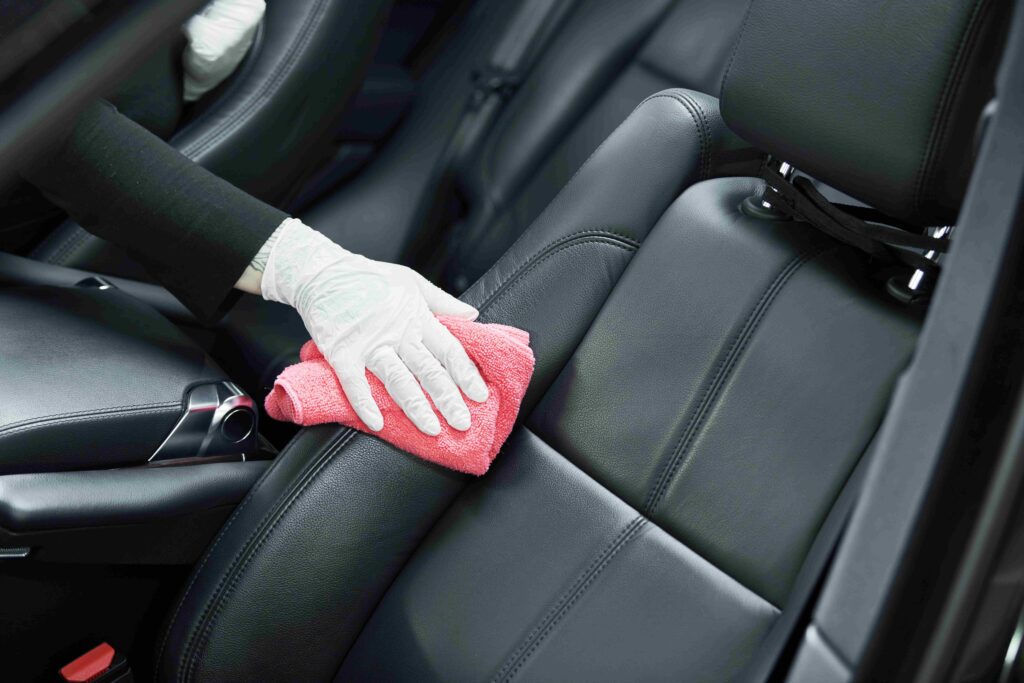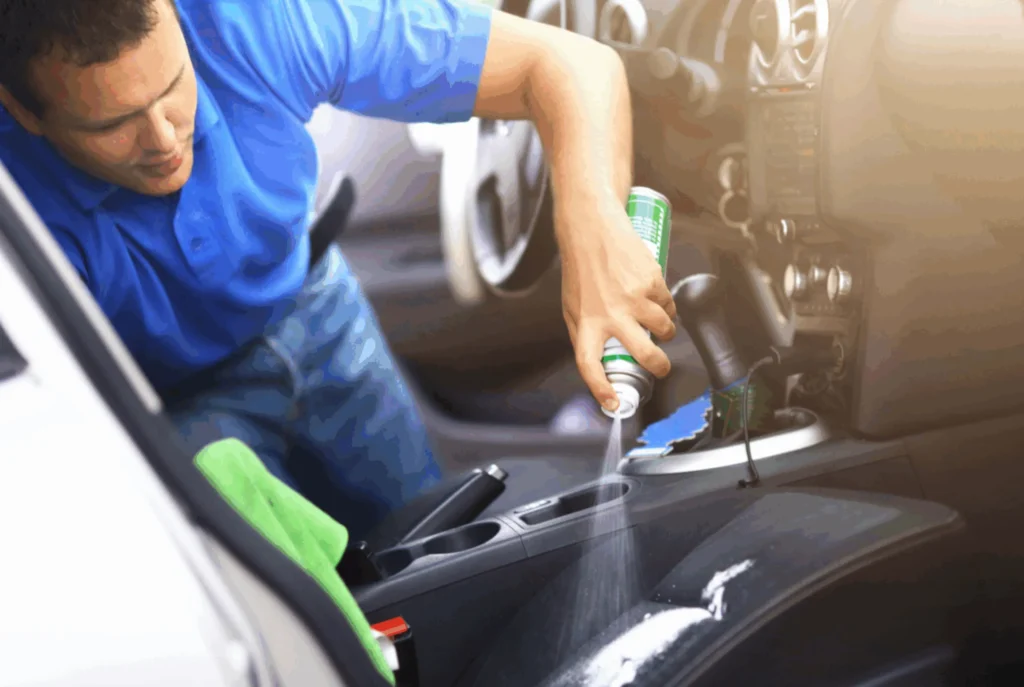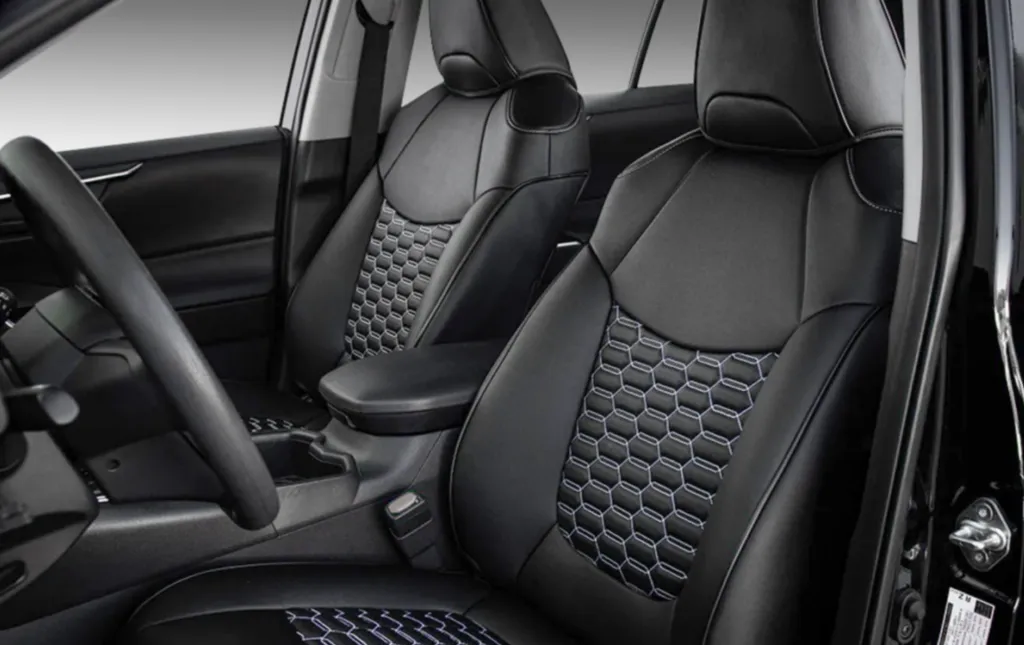Nahkaiset auton istuinsuojat lisäävät ajoneuvoosi ripauksen ylellisyyttä ja tarjoavat samalla erinomaisen kestävyyden. Ilman asianmukaista hoitoa nahka voi menettää pehmeytensä, halkeilla tai haalistua ajan myötä. Jotta nahkaiset istuinpäälliset pysyisivät uudenveroisina ja kestäisivät pitkään, on tärkeää noudattaa asianmukaista huoltorutiinia. Tässä on vaiheittainen opas nahkaisten auton istuinpäällisten hoitoon ja ylläpitoon kestävyyden takaamiseksi.

1. Valmistele pinta
Ennen nahkasohvien puhdistamista on erittäin tärkeää valmistella pinta. Aloita imurilla ja pehmeällä harjasuulakkeella pölyn, lian ja irtonaisen roskan poistamiseksi istuimista. Tämä vaihe auttaa estämään hiukkasia naarmuttamasta nahkaa puhdistusprosessin aikana.
Ole huolellinen, erityisesti raoissa ja istuintyynyjen välissä, joihin kerääntyy likaa ja pölyä. Puhdas pinta on välttämätön nahan tehokkaalle puhdistukselle ja hoidolle.
2. Valitse oikea nahanpuhdistusaine
Väärien puhdistusaineiden käyttö voi vahingoittaa nahkaa ja lyhentää sen käyttöikää. Vältä voimakkaita kemiallisia puhdistusaineita, jotka voivat poistaa nahan luonnolliset öljyt ja altistaa sen kuivumiselle ja halkeilulle. Valitse sen sijaan autokäyttöön tarkoitettu nahanpuhdistusaine. Nämä puhdistusaineet on kehitetty poistamaan likaa ja tahroja säilyttäen samalla nahan rakenteen ja viimeistelyn.
Etsi nahanpuhdistusaine, jonka pH-arvo on tasapainotettu eikä se sisällä alkoholia tai muita voimakkaita kemikaaleja. Ihannetapauksessa sen tulisi puhdistaa hellävaraisesti vahingoittamatta pintaa ja jättää istuimet raikkaiksi poistamatta nahan kimmoisuudelle välttämättömiä luonnollisia öljyjä.
3. Kuinka puhdistaa nahkaiset autonistuimet
Kun pinta on valmisteltu ja sinulla on oikea puhdistusaine, on aika puhdistaa nahkaistuimet. Tässä on vaiheittainen prosessi nahkaistuinten perusteelliseen puhdistamiseen:
- Testaa puhdistusaine: Ennen kuin levität puhdistusainetta koko istuimelle, testaa sitä aina pienellä, huomaamattomalla alueella varmistaaksesi, ettei se värjää tai vahingoita nahkaa.
- Levitä puhdistusaine: Levitä puhdistusainetta mikrokuituliinalla tai sienellä pienin, pyörivin liikkein. Työskentele osissa, jotta mikään alue ei kastu liikaa. Keskity alueisiin, joissa on näkyvää likaa tai tahroja, mutta älä unohda kulmia tai saumoja, joihin lika voi kertyä.
- Pyyhi ylimääräinen pois: Kun olet puhdistanut alueen, pyyhi ylimääräinen puhdistusaine pois kuivalla mikrokuituliinalla. Tämä vaihe auttaa estämään jäämien kertymisen nahkaan, mikä voi johtaa siihen ajan myötä.
- Toista tarvittaessa: Jos huomaat pinttyneitä tahroja, toista puhdistusprosessi, mutta vältä liiallista hankausta, sillä se voi kuluttaa nahan suojaavaa pintaa.

4. Suojaa nahkaa
Puhdistuksen jälkeen nahan hoito on ratkaisevan tärkeää kosteuden palauttamiseksi ja sen kuivumisen tai halkeilun estämiseksi. Nahka on luonnostaan altis menettämään kosteutta, erityisesti altistuessaan auringonvalolle, lämmölle ja kitkalle säännöllisen käytön seurauksena. Nahanhoitoaineet täydentävät materiaalin luonnollisia öljyjä, mikä auttaa sitä säilyttämään pehmeytensä ja joustavuutensa.
- Valita Oikea nahanhoitoaine: Nahanhoitoaineet on suunniteltu erityisesti nahkatuotteille, kuten puhdistusaineille. Valitse korkealaatuinen hoitoaine, joka ei sisällä väriaineita, silikoneja tai vahoja, sillä ne voivat tukkia nahan huokoset ja aiheuttaa sen hengittävyyden heikkenemisen.
- Levitä hoitoaine: Levitä puhdasta mikrokuituliinalla runsaasti hoitoainetta nahkaistuimiin. Työskentele jälleen pienissä osissa ja hiero hoitoainetta hellävaraisesti pyörivin liikkein. Anna hoitoaineen imeytyä nahkaan muutaman minuutin ajan.
- Kiillota nahka: Kun hoitoaine on imeytynyt, kiillota nahka pehmeäksi ja kuivalla liinalla. Tämä vaihe auttaa poistamaan ylimääräisen tuotteen ja varmistaa, ettei nahka näytä rasvaiselta tai tahmealta.
5. Pidä nahkaistuimesi hyvässä kunnossa
Nyt kun istuimesi ovat puhtaat ja hyväkuntoiset, on tärkeää ylläpitää niiden terveyttä noudattamalla näitä vinkkejä:
- Vältä suoraa auringonvaloa: Pitkäaikainen altistuminen suoralle auringonvalolle voi aiheuttaa nahan haalistumista ja kuivumista. Säilytä ajoneuvo varjossa tai käytä aurinkosuojaa istuinten suojaamiseksi UV-säteiltä.
- Käytä nahkasuojusta: Nahkasuoja-aineet ovat suihkeita, jotka on suunniteltu luomaan näkymättömän suojan nahan pinnalle ja suojaamaan sitä lialta, tahroilta ja roiskeilta. Nahkasuoja-aineen levittäminen muutaman kuukauden välein voi pitää istuimesi raikkaina ja suojata niitä tulevilta vaurioilta.
- Pidä istuimet kosteina: Nahka voi menettää kosteuttaan ajan myötä, mikä johtaa kuivumiseen ja halkeamiin. Huolla nahkaistuimet säännöllisesti pitääksesi ne kosteutettuina. Hoita ne joka 2–3 kuukautta on ihanteellinen, mutta jos ajoneuvosi altistuu usein ankarille olosuhteille (kuten äärimmäiselle kuumuudelle), saatat haluta hoitaa sitä useammin.
7. Mitä nahkaisia autonistuimia hoidettaessa tulisi välttää
Vaikka nahkaistuinten puhdistus ja hoito ovat tärkeitä vaiheita, on myös joitakin asioita, joita kannattaa välttää:

- Vahvat kemikaalit: Vältä yleispuhdistusaineiden tai valkaisuaineiden käyttöä, sillä ne voivat vahingoittaa nahkaa. Käytä sekä puhdistukseen että hoitoon nahkatuotteissa erityisiä tuotteita.
- Liiallinen kosteus: Nahkaa ei saa liottaa vedessä tai puhdistaa liian kostealla vedellä. Käytä aina kosteaa liinaa märän sijaan äläkä koskaan kastele nahkaa liikaa.
- Terävät esineet: Varo teräviä esineitä, kuten avaimia, kyniä tai mitä tahansa, jotka voivat naarmuttaa tai puhkaista nahkaa. Näitä epätäydellisyyksiä voi olla vaikea korjata.
Johtopäätös
Nahkaisten autonistuinten hoitaminen ei ole vaikeaa, mutta säännöllinen huolto on tarpeen, jotta ne näyttävät ja tuntuvat parhaimmillaan. Noudattamalla näitä yksinkertaisia ohjeita – nahkaistuinten puhdistamista, hoitamista ja suojaamista – voit varmistaa, että ne pysyvät pehmeinä, kestävinä ja pitkäikäisinä vuosia. Asianmukaisella hoidolla nahkaiset autonistuimesi lisäävät mukavuutta ja tyylikkyyttä autoosi säilyttäen samalla alkuperäisen ulkonäkönsä. ylellinen vetovoima.
Panostamalla hieman aikaa ja vaivaa niiden huoltoon, voit nauttia nahkaistuinten ajattomasta kauneudesta ja kestävyydestä pitkällä aikavälillä.














